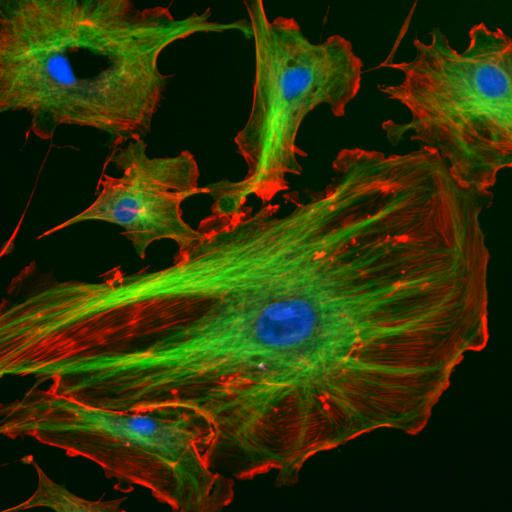-
 Transplant organ or tissue
Transplant organ or tissue
-
 Atrial flutter
Atrial flutter
-
 Moulting
Moulting
-
 Keratinocyte
Keratinocyte
-
 Nail
Nail
-
 Natural gas
Natural gas
-
 EMS
EMS
-
 Aerodynamic vehicle
Aerodynamic vehicle
-
 SHA-1
SHA-1
-
 Acrylamide
Acrylamide
-
 Conglomerate
Conglomerate
-
 Dimorphism
Dimorphism
-
 Manganese
Manganese
-
 Transmission electron microscope
Transmission electron microscope
-
 Zonisamide
Zonisamide
-
 Thermal solar panel
Thermal solar panel
-
 Oligohaline water
Oligohaline water
-
 Convulsion
Convulsion
-
 Granzyme
Granzyme
-
 Yohkoh
Yohkoh
-
 MySQL
MySQL
-
 Quartz
Quartz
-
 DTS
DTS
-
 Anti-HER
Anti-HER
-
 Chloasma
Chloasma
-
 Formaldehyde
Formaldehyde
-
 CD-ROM
CD-ROM
-
 Calculus
Calculus
-
 Douglas fir
Douglas fir
-
 Narcolepsy
Narcolepsy
Cytoskeleton
The cytoskeleton is the skeleton of the cell.
Structure of the cytoskeleton
The cytoskeleton is a filamentous network within a cell giving it its mechanical properties. It contains many types of filaments in eukaryotes:
- flexible polymerised actin filaments and ;
- small, so-called intermediary filaments (the role of which is poorly understood) ;
- rigid microtubules .
Function of the cytoskeleton
The cytoskeleton provides the cell with a degree of rigidity and is used to fix the organelles (the equivalent to the cell as the organs in the body).
The cytoskeleton reorganises itself continuously and therefore controls internal movements (for example movement of chromosomes) and deformations of the membrane (production of protuberances, invaginations and adhesion sites, etc.)
 The parts of the cytoskeleton can be labelled with fluorescent proteins. Here, actin is shown in red and the microtubules in green (and the nucleus in blue). © DR
The parts of the cytoskeleton can be labelled with fluorescent proteins. Here, actin is shown in red and the microtubules in green (and the nucleus in blue). © DR
Latest
Fill out my online form.



